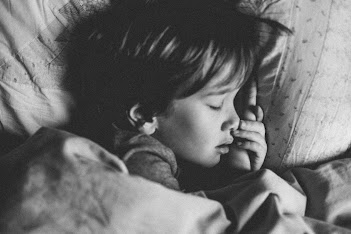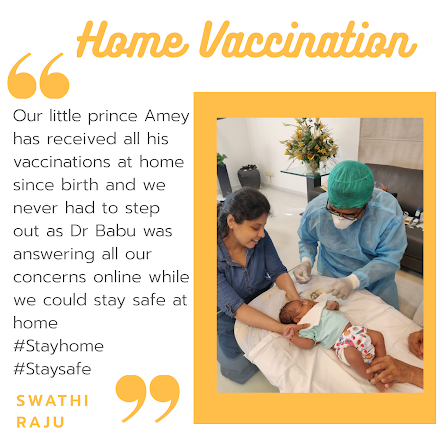Most Common Childhood Illnesses
If you are a parent, you know that young children get very sick. Children are more susceptible to disease due to their rudimentary immune systems and high exposure to germs in schools and childcare facilities. Most children have 6 to 8 colds a year. It takes time for the immune system to mature and fight these germs, so it’s common for young children to come up with colds, coughs, and minor illnesses. Other common childhood illnesses include allergies, skin problems, eye conditions, neurological problems, and gastrointestinal ailments. It is important to understand which conditions affect certain age groups, as well as their severity.
As a parent, it is important to be aware of the most up-to-date treatment guidelines so you can be sure your child is getting the best possible care. Parenting can be a daunting affair that comes with its share of trial and tribulations. A sudden illness will test the limits of your endurance and leave you anxious and disappointed about the best course of action to treat your child.
Fortunately, there are ways to help prevent many of the most common insects and viruses in childhood. To keep your child healthy and happy, we are sharing some prevention tips and valuable information about the five most common childhood diseases.
Common Cold/ Sore Throat
Common Cold (Nasopharyngitis), Swollen Tonsils (Acute Tonsillopharyngitis) and Sore Throat (Strep Throat) are common respiratory tract infections that can happen to your child. Cold is one of the most common childhood illnesses and children can experience many colds throughout the year.
Most of the people believe that common cold is caused by getting wet or going outside in cold weather. But it is not so. It is caused by any one of several viruses. Flu viruses spread through the air, which means they are spread when a sick person coughs or sneezes. Common symptoms are chest congestion, swollen glands, runny nose and cough. These symptoms usually last from seven to ten days.
You can help your child cure a sore throat by giving warm liquids to drink. You can also give them a little warm salt water to gargle periodically.
For bacterial infections such as strep throat, we recommend that you avoid giving your child antibiotics unless prescribed by a doctor, as most of these problems will go away within 5-10 days.
Stomach infections
Stomach pain is another problem among common childhood illnesses in young children. If your child goes to the toilet repeatedly (more than three times a day) and has watery stools, they may have diarrhoea.
Most common symptoms of stomach infections are nausea and vomiting with scented and watery stools. There may be stomach fever or an infection in the intestine. Other symptoms include muscle aches, abdominal pain, and mild fever.
Be aware that symptoms that are contrary to diarrhea (emptying the bowel less than three times a week) can be a sign of constipation. Avoid these events by having your child maintain good physical hygiene and eat homemade foods rich in fibre (to relieve constipation). It is also important to make sure you clean your child regularly to prevent any parasitic infections.
Chickenpox
Chickenpox is a mild illness that most children will have at some point. Chickenpox is easy to catch, and the main symptom is red rash-red spots that can appear anywhere on the body and fill with fluid before they start to scab. The bubbles may burst and some bubbles may appear when others are covered. Other symptoms your child may have included high fever above 38 ° C, aches and pains, loss of appetite and a general feeling of unwell. It usually heals within a week without seeing a GP, but your child will need to stay away from school or nursery until all the spots have crusted; usually, about 5 days after the spots begin to appear.
See your doctor if you are not sure if you have chickenpox or the skin around the blisters is red, hot, or painful (signs of infection). If your our child could also be dehydrated and you are worried about your child or it is getting worse, you should see a doctor immediately.
Pink eye (conjunctivitis)
Pink Eye or Conjunctivitis is a common eye infection that can affect children. It is caused by allergies or infection. If your child has conjunctivitis, they may have bloody, itchy eyes that are burning or hardening; their eyes may water more than usual and there may be a discharge that clings to the lashes. Conjunctivitis, which produces sticky pus and red, lumpy eyes, is often contagious. If your child has allergies behind his conjunctivitis, his eyes may be red and watery, but it won’t be contagious.
Viral or bacterial conjunctivitis is contagious (not allergic conjunctivitis). While your child has conjunctivitis, you can help to care and prevent the spread of the infection by encouraging them to wash their hands frequently with warm soapy water and asking them to avoid rubbing their eyes. Wash pillows and face cloths with hot water and detergent and do not share towels or pillows.
The crusted discharge should be cleaned with boiled clean cotton and cold water (use a clean cotton ball for each eye)
Conjunctivitis is usually not serious and usually resolves within a few weeks without treatment. See your doctor if your child’s conjunctivitis does not go away within this time, or if your baby’s eyes are red. See your doctor immediately if your baby has red eyes and is less than 28 days old, or if your child complains of light sensitivity, changes in vision, or intense redness in one or both eyes.
Ear infection
Ear pain is common in children and can have many causes, including ear infection (otitis media), swimmer’s ear (skin infection in the ear canal), pressure from a cold or sinus infection, a toothache that spreads from the jaw to the ear, and others. . To tell the difference, your paediatrician will need to examine your child’s ear. The in-room examination is still the best way for your paediatrician to make an accurate diagnosis. If your child’s ear pain is accompanied by a high fever, if it involves both ears, or if your child has other signs of illness, your paediatrician may decide that an antibiotic is the best treatment.
Amoxicillin is the antibiotic of choice for middle ear infections – except for an allergy to penicillin or chronic or recurrent infections.
Most real ear infections are caused by viruses and do not require antibiotics. If your paediatrician suspects your child’s ear infection is caused by a virus, he will talk to you about the best ways to relieve your child’s earache until the virus has finished its course.
Occasionally, mild infections – viral or bacterial – can turn into more serious infections.
Call your pediatrician if your child’s illness changes, worsens, does not go away after a few days, or if you are concerned about any new symptoms appearing. If your child’s illness has worsened or complications arise, your pediatrician may recommend a new treatment.
Kids Docs Speciality Clinics provides the best possible comprehensive neonatal and pediatric services for children in Hyderabad. With the best paediatrician in Hyderabad, we offer a wide range of specialized healthcare for all types of common childhood illnesses.
For more information,
Call us on +91 9059543782
Write to us at drbabumedehal@gmail.com
Visit Us at: Pillar number 1484, 8-3-318/10/2 Adj. Radha Nursing Home, Yousufguda Main Rd, Opp. Allahabad Bank, Hyderabad, Telangana 500073




Comments
Post a Comment